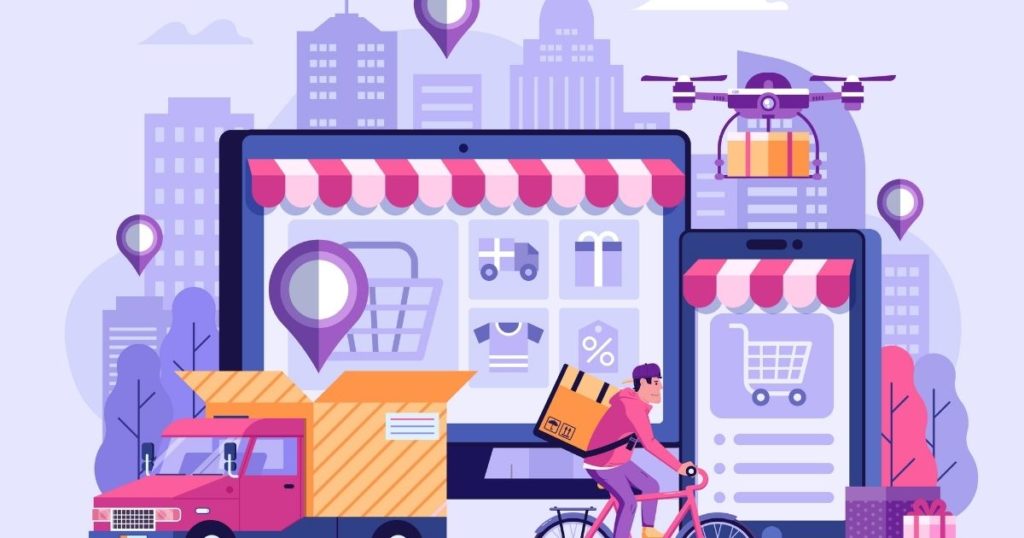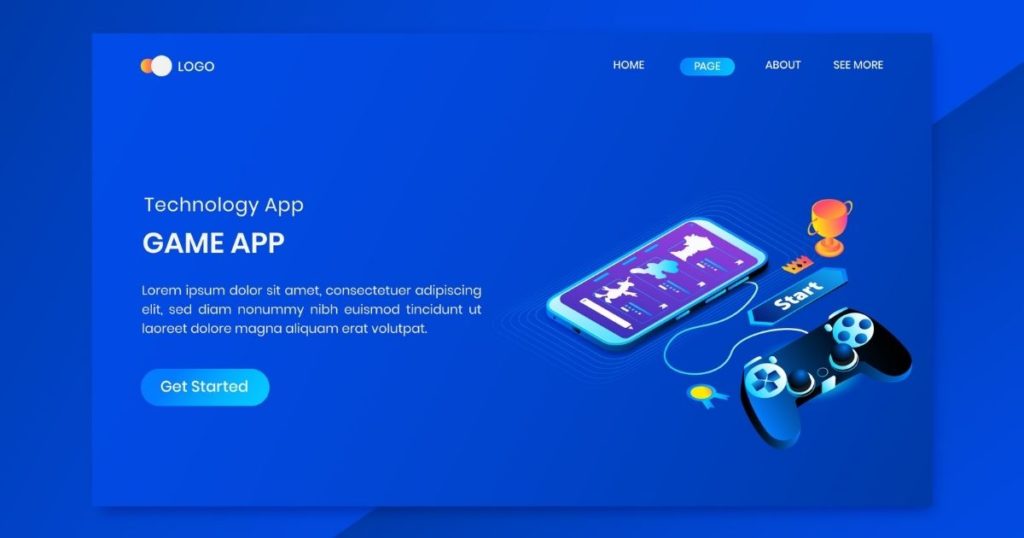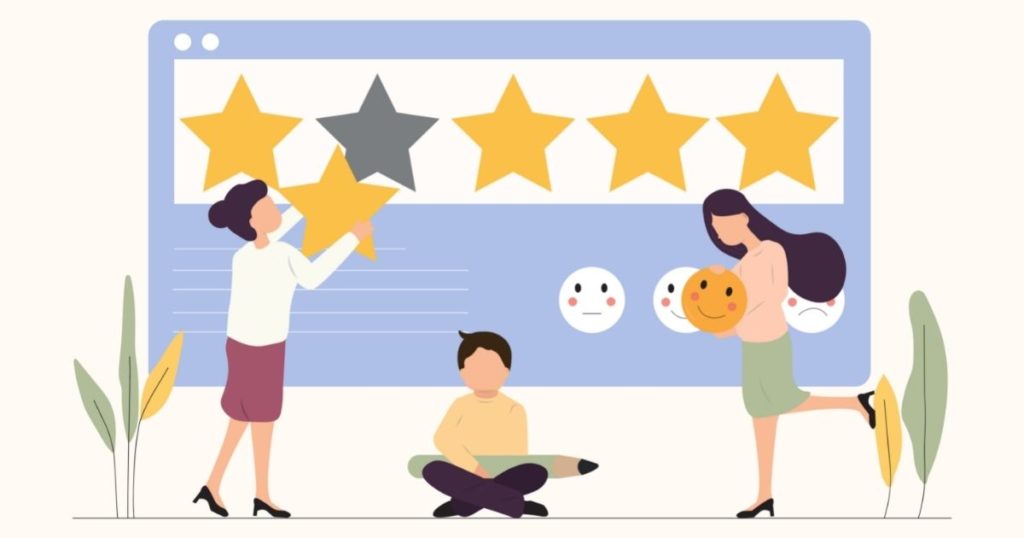Summarize the blog with Artificial Intelligence (AI):

Knowing how to create a converting landing page is the cornerstone of digital marketing, and it is a skill every digital marketer should know.
If a customer clicks on digital ads, they will be taken to a landing page. Even your links in other media can lead to specifically designed landings.
If that page is well made, then more people will be inclined to convert. However, if it is not optimized correctly, your conversion rate might suffer.
So how can you make great landings to convert more visitors? Well, if that is the question on your mind, then keep reading as we explain it to you!
Highlights
- A landing page is a webpage specifically designed to convert customers.
- All the essential information required to convert should be on the hero.
- The five-second test can help you understand what is missing.
- A landing page should only have a single goal.
- Including social proof in your landings is a great way to increase conversion.
- More landing pages lead to a higher conversion rate.
- You can A/B test each component of your landings to find what works.
- A faster page leads to a higher conversion rate.
What Is A Landing Page?
A landing page or a landing is a webpage designed specifically for marketing or advertising campaigns. It is simply where a visitor lands when they click on your links or ads. Landing pages can be your homepage or they can be standalone webpages created for specific marketing campaigns.
The main purpose of a landing page is to convert customers. And they are generally promoted through digital advertisements.
If your homepage also serves this purpose, then it can be promoted through digital advertisements to be your landing. Still, using standalone pages is generally a better practice.
Your home pages will need to have navigational links and buttons to the other parts of your website. These can create distractions for your visitors and could reduce your conversion rate.
On the other hand, landings don’t have to include anything other than the essentials needed for conversion. For this reason, they can focus only on converting your customers and prevent them from getting distracted by your other website content.
How To Create A Great Landing Page?
1. Craft an Irresistible Hero Section
The hero section stands as the crucial first touchpoint on your landing page, positioned prominently right beneath any header you might have. This is where the magic happens: it’s where visitors make the pivotal decision on whether your offer intrigues them enough to stay or compels them to leave. For a hero section to successfully convert visitors into leads or customers, it must embody a meticulously curated blend of elements.

A successful hero should contain the following components:
- A headline designed to capture the attention.
- A short description to communicate the value of the offer.
- Visual elements to conceptualize the offer.
- A call to action (CTA) button or a form field to capture the lead.
2. Use the five-second test.
The five-second test is a great way to measure the effectiveness of your landing page. It is one of the simplest tests you can use to find potential problems.
You can do this test with your friends or coworkers, but it will be much more effective if you do it with people who are unfamiliar with your business.

Here is how to do the five-second test:
- Show the participants your landing page for five seconds.
- After five seconds, immediately close your page.
- Ask the participants what the page was about, and see if they have the right idea.
- Write down their answers and compare them with what your offer is actually about.
Yep, that’s all!
Most visitors will leave a landing page if they cannot understand its relevance in five seconds. If your participants got what your landing page is all about during the test, then that means you have an effective landing page. But if they didn’t, your landing page might need some tweaking.
3. Focus on a single goal.
The main objective of a landing page is to drive a single conversion goal. So, your entire page should be optimized for that single goal to prevent visitors from getting distracted.
Landing pages with more than one offer generate 266% fewer leads than pages with a single offer. And any additional form or call to action reduces the conversion rate by distracting the visitors.
So when creating landings for your visitors, try to make each landing about a single offer. Avoid cramming too many fields and distractions into the page.
4. Include testimonials
Including social proof is a powerful strategy in marketing, and landing pages are no different. Many top landing pages include social proof. To be more precise, 36% of top-performing landing pages feature customer testimonials, while 11% of them feature a review section.

The reason for this is simple: humans are social animals, and the recommendations of others matter to us.
If you are going to buy a new laptop, you would want to make sure it functions properly. The best way to ensure it is to ask someone who has used the same model before and learn about their experiences with the product.
Testimonials provide the same effect. They allow visitors to learn the experiences of others who have used the same product or service before. If the messages are positive, then they will be more likely to convert.
5. Create more landing pages
According to Hubspot’s study, having more landings can increase generated leads by up to 55%. This is a whooping boost for any company that wishes to generate leads!
The statistic is obvious, the more tailored landings you have for each specific offer, the more leads you can generate!
To make landing pages faster and easier, you can invest in a landing page builder tool.
6. A/B test until you get it right.
A/B testing is a powerful tool that enables you to fine-tune every aspect of your landing pages by comparing different versions to see which performs best. In this process, you create two versions of your landing page, each with a slight variation, and then direct identical traffic to both. This ensures that the only variable affecting conversion rates is the change made between the two versions.
By employing A/B testing, you’re able to make data-driven decisions about which elements of your landing page—be it the headline, imagery, call to action, or any other component—resonate most effectively with your audience. This iterative process of testing, analyzing, and refining allows for continuous improvement, optimizing your landing pages to achieve the highest possible conversion rate. Essentially, A/B testing is about identifying and implementing the elements that unlock the full potential of your landing pages, ensuring that every detail contributes to a more successful conversion strategy.
7. Increase your page load speed.
Faster websites lead to better customer experience, but with landing pages, the importance of speed becomes even more clear.
The top landings have a load time of 0-2 seconds, and the first five seconds of your page load speed have the highest impact. Website conversion rates drop by an average of 4.42% for each additional load time up to five seconds.
Having faster load speeds also improves your SEO, and increases your search ranking.
A faster website will not only make your pages convert more visitors but will also increase your organic traffic as a result of having better search engine rankings.
So, always test your landing to see if it is loading fast enough. And if not, consider investing in a fast infrastructure for your website. With that, you can both increase your sales and take your digital marketing journey to the next level thanks to better SEO and conversion rates.
Related Article: Top 5 Digital Skills You Should Learn In 2023
8. Optimize for the Mobile
Mobile optimization is a critical aspect of landing page design that cannot be overlooked in today’s digital landscape. With the majority of internet users accessing websites via smartphones, ensuring your landing page is fully optimized for mobile devices is paramount. This means your page must load quickly, display content appropriately without the need for zooming or horizontal scrolling, and have touch-friendly navigation.
A mobile-optimized landing page not only provides a better user experience but also positively impacts your search engine rankings, as search engines favor mobile-friendly websites. Moreover, call-to-action (CTA) buttons should be prominently placed and easy to tap, and forms should be simplified to minimize typing effort. By prioritizing mobile optimization, you ensure that every visitor, regardless of the device they are using, has a smooth and engaging experience that encourages them to convert.
9. Strategically Use Colour and Typography
The strategic use of colour and typography on your landing page does more than just beautify the space; it fundamentally influences visitor behavior and perception. Colour can evoke specific emotions and set the tone for the entire user experience, guiding the attention of the visitors to key areas like the call to action. For instance, a vibrant red might energize and excite, encouraging prompt action, while a calming blue can build trust and credibility.
Similarly, typography plays a critical role in ensuring your message is not only read but felt. The right font choice and text hierarchy make your content accessible and digestible, guiding the reader’s journey through your landing page with ease. By thoughtfully combining colour psychology and typographic principles, you can create a visually appealing and psychologically compelling environment that significantly enhances the likelihood of conversion.
10. Leverage Psychological Triggers
Incorporating psychological triggers into your landing page design can significantly amplify its effectiveness, tapping into the subconscious motivations that drive user behavior. These triggers, such as urgency, scarcity, and the fear of missing out (FOMO), can compel visitors to act swiftly, motivated by the desire to gain benefits or avoid loss. Urgency can be created with limited-time offers, encouraging users to make immediate decisions. Scarcity, highlighting limited availability, taps into the fear of missing out on a valuable opportunity.
Together, these elements not only make your offer more appealing but also expedite the decision-making process, enhancing your landing page’s conversion rate by appealing to the innate human responses to these psychological cues.
11. Elevate Engagement with Video Content
Integrating video content into your landing page can be a game-changer for engaging visitors and conveying your message more effectively. Videos have the power to captivate attention quickly, providing a dynamic way to showcase the benefits of your products or services, explain complex ideas simply, or share compelling customer testimonials. This rich media format allows for a deeper connection with your audience, as viewers are more likely to retain information presented visually and audibly compared to text alone.
By adding video content, you not only enhance the aesthetic appeal of your landing page but also significantly increase the likelihood of converting visitors into leads or customers, making it a vital tool in the arsenal of landing page optimization strategies.
12. Build Trust with Privacy Assurance
In today’s digital age, privacy concerns are at the forefront of the minds of users, making privacy assurance an essential element of any landing page. By explicitly stating your commitment to protecting user data, you can build trust and credibility with your visitors. This could involve clear messaging about not sharing personal information with third parties, employing secure forms for data collection, or displaying security badges and encryption symbols.
Such assurances reassure visitors that their data is safe and respected, encouraging them to engage with your content and share their information. Incorporating privacy measures and transparent communication about data handling practices not only comply with legal standards but also strengthens the relationship with your audience, fostering a sense of security that is crucial for conversion success.
13. Streamline Navigation and Layout
Optimizing navigation and layout is pivotal in crafting landing pages that not only captivate but also convert. A streamlined navigation design minimizes distractions, guiding visitors effortlessly toward your conversion goal without overwhelming them with unnecessary options. The layout should highlight key information and calls to action, employing a visual hierarchy that draws attention to the most important elements first.
By simplifying the user’s journey, you reduce bounce rates and create a more focused pathway to conversion, ensuring that every design choice is intentional and aligned with your ultimate objective.
14. Align with the Customer Journey
Tailoring your landing page to align with the specific stage of your visitor’s customer journey can dramatically enhance its effectiveness. Understanding whether your audience is at the awareness, consideration, or decision stage allows you to customize content that meets their expectations and addresses their needs at that precise moment.
This strategic alignment ensures that your message resonates more deeply, making it more likely that visitors will take the desired action. By mapping out the customer journey and crafting your landing page accordingly, you create a more personalized and relevant experience that significantly improves conversion rates.
15. Engage Users with Interactive Elements
Incorporating interactive elements like quizzes, calculators, or interactive demos into your landing page not only enhances engagement but also provides personalized value to visitors. These tools invite users to interact with your content actively, offering them tailored results or insights that directly relate to their interests or needs.
This level of personalization and engagement can significantly increase the likelihood of conversion, as visitors feel that your brand understands and caters to their unique circumstances. Moreover, interactive elements can gather useful insights about your audience, further refining your marketing strategies.
16. Nurture Leads with a Solid Post-Conversion Strategy
What happens after a visitor converts is just as important as the conversion itself. A well-thought-out post-conversion strategy can turn a one-time action into a lasting relationship. This includes designing engaging thank-you pages that confirm the conversion and set expectations, sending out lead-nurturing emails that provide additional value, and keeping new leads engaged with relevant content and offers.
By continuing the conversation beyond the initial conversion, you encourage loyalty and repeat business, ensuring that your new leads feel valued and remain connected to your brand.
17. Ensure Compliance and Accessibility for All Visitors
Compliance with regulations like GDPR and adherence to web accessibility standards are crucial for creating inclusive and legally compliant landing pages. This commitment to privacy, security, and accessibility demonstrates your brand’s dedication to ethical practices and respect for all users, including those with disabilities.
Making your landing page accessible to everyone, regardless of ability, not only broadens your potential audience but also reflects positively on your brand’s values. In addition, staying compliant with data protection laws builds trust with your visitors, assuring them that their personal information is handled with care.
18. Learn from Success with Case Studies and Examples
Exploring case studies and examples of successful landing pages across various industries can offer valuable insights and inspiration. These real-world examples highlight best practices in action, demonstrating how effective design, compelling content, and strategic marketing tactics come together to achieve outstanding results.
By studying these success stories, you can glean practical tips and innovative ideas to apply to your landing pages, adapting strategies that have proven successful in engaging audiences and driving conversions.
Takeaways
Creating a high-converting landing page is an essential skill for digital marketers aiming to optimize their online marketing efforts. By focusing on clear, single-goal pages that incorporate essential elements such as a captivating hero section, employing social proof like testimonials, and ensuring the page loads quickly, marketers can significantly enhance the likelihood of converting visitors into customers. Utilizing the five-second test and A/B testing enables continuous improvement, ensuring that the landing page resonates well with the target audience. Moreover, having multiple tailored landing pages for different offers can further boost conversion rates. In essence, mastering the art of creating effective landing pages not only improves conversion rates but also elevates the overall digital marketing strategy, leading to better engagement, higher leads, and ultimately, increased sales.
